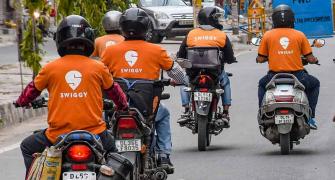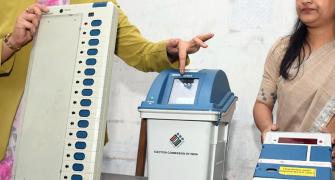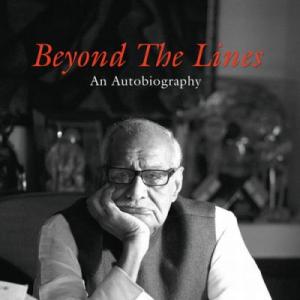After the defeat in the 1962 war with China, the Indian government requested Lieutenant General Henderson-Brooks and Brigadier Prem Bhagat to prepare a report.
Fifty years later, it remains one of India's most secret documents.
What on earth has stopped the government from revealing the report to the Indian public, asks Claude Arpi.
Year 2012 is a special year.
While China will replace seven out nine of its 'core' leaders by the end of the year; India will 'remember' the 50th anniversary of the Peoples' Liberation Army entering NEFA (present day Arunachal Pradesh) and Ladakh, inflicting the worse post-Independence trauma to India.
The Sino-Indian conflict has remained a scar on the nation's psyche, partly because there remains a feeling that it can happen again, but also because we do not know what exactly happened on the slopes of the Thagla ridge in October 1962. Of course, a lot has been written on the subject and probably more will be written before October.
A few months after the debacle, the Indian government requested Lieutenant General Henderson-Brooks and Brigadier Prem Bhagat to prepare a report of the events which led to the fiasco. It is unfortunately that 50 years later, it is still the most secret Indian document.
Though in 1963, extracts were read out in Parliament by then defence minister Y B Chavan who took over from the disgraced V K Krishna Menon after the debacle of October 1962, the gist of the Henderson-Brooks report seems to be missing.
Between 1962 and 1965, R D Pradhan was Chavan's private secretary; in his memoirs, he provides some insights on the issue: 'During the conduct of the enquiry, Chavan was apprehensive that the committee may cast aspersions on the role of the prime minister or the defence minister.' Pradhan adds: 'His (Chavan) main worry was to find ways to defend the government and at the same time to ensure that the morale of the armed forces was not further adversely affected.'
Chavan's secretary concluded that Chavan 'earned the gratitude of the prime minister.'
Was it by classifying the Henderson-Brooks report forever?
In 2008, answering a question on the report, Defence Minister A K Antony told Parliament that the Henderson-Brooks report could not be made public because an internal study by the army had established that its contents 'are not only extremely sensitive, but are of current operational value.'
Nobody will believe that a 49-year-old report is still of 'operational value'.
It could only be a manual of what should NOT be done in case of a conflict with China or any other country. All the more reason to study it!
In 2005, veteran journalist and former MP Kuldip Nayar requested, under the Right to Information, the ministry of defence 'to make me available a copy of the report'.
The defence ministry's stand was articulated during a hearing of the commission in March 2009: 'Disclosure of this information will amount to disclosure of the army's operational strategy in the North-East and the discussion on deployments has a direct bearing on the question of the demarcation of the Line of Actual Control between India and China, a live issue under examination between the two countries at present.'
On March 19, 2010, in a 'decision notice', the Central Information Commission said: 'The disclosure of information of which the Henderson Brooks report carries considerable detail on what precipitated the war of 1962 between India and China will seriously compromise both security and the relationship between India & China.' As a result: 'No part of the report might at this stage be disclosed.'
One is left playing a guess game. A sentence, however gives us an indication: 'The issue of the India-China Border is still a live issue with ongoing negotiations between the two countries on this matter.'
What has the McMahon Line to do in this matter?
The military operations in 1962
Let us return fifty years ago. In early October 1962, the Chinese military intelligence had gathered that Indian forces were planning to 'attack China' on the Thagla ridge on October 10. A few days earlier, Mao Zedong had told his party's colleagues: 'It seems like armed coexistence won't work. It's just as we expected. Nehru really wants to use force. This isn't strange. He has always wanted to seize Aksai Chin and Thagla ridge. He thinks he can get everything he desires.'
Mao seems to believe that India would 'attack'.
Though there was no question of the Indian army 'attacking China' with no food, no warm clothes, no armament or ammunition supply, the Chinese seemed to have perceived the situation differently.
Were they just looking for a pretext? What was the pretext?
The answer is to be found in the accounts of senior army officers, the unwilling actors in the 'Himalayan blunder'. Major General Niranjan Prasad, the GOC of 4 Infantry Division in his book The Fall of Towang (Tawang) describes the setting of the operations thus: 'The McMahon Line from just north of Khinzemane, as drawn by Sir Henry McMahon in 1914 with a thick blue (in fact, red) pencil on an unsurveyed map, was not an accurate projection of the Himalayan watershed line. ...In this process the position of Thagla ridge was, to say the least, left ambiguous. The story goes that the officer surveying the area had completed an admirable task of delineating the watershed up to this point when a pretty Mompa girl claimed his attention and the work was left uncompleted.'
Pretty girl or not, the survey had been completed in 1913 by Captains Bailey and Morshead, but it is true that it was rather sketchy (1 inch to 8 miles).
If one follows the watershed principle as well as the ownership of customary pastures' rights, the Thagla ridge was the border, but the fact remains that the old map which was the reference for India's position on the 'genuine' location of the McMahon Line, showed the Thagla ridge and the Namkha Chu, north of the Red Line. Further surveys were unfortunately not conducted after India's Independence.
The Forward Policy
It is necessary to return two years earlier to understand the situation on the eve of the tragedy. The Government of India had mooted a new policy to establish posts right on the border; it was the famous 'Forward Policy'. The sighting of these posts and their exact location was, however, decided mainly by the Intelligence Bureau and not the Army.
It was the brainchild of Krishna Menon, the defence minister, with the full support of the prime minister, who however had stated that posts should not be established in 'disputed areas'.
The local commanders (Corps, Division and Brigade) were not happy and they made it known, but nothing could stop the folly of the 'authorities' in Delhi. Brigadier John Dalvi recalled: 'Many generals, including General Umrao Singh (the 4 Corps Commander), opposed the indiscriminate opening up of more posts. ...The setting up of posts in disputed territory is a different matter. It is an act of rashness, whoever decreed it and with whatever authority, unless we had the means to settle the resultant dispute on the battlefield.'
As the local GOC of the 4 Infantry Division, Major General Niranjan Prasad noted, the local commanders had no choice, though they could certainly have resigned, but in an almost war situation, it was not an easy decision to take.
In his Himalayan Blunder, Dalvi questions how the Dhola Post on the Namkha Chu, near the Thagla ridge came into existence: 'We seemed to have ventured most casually into a potentially explosive commitment. Instead of working in water-tight compartments, we should have alerted the whole Army and prepared for a clash.'
The Intelligence Bureau and its then director, B N Mullick, had probably no clue about the exact position of the border and the Chinese preparations.
Visit of the Director of Military Operations
On August 14, 1962, Brigadier D K Palit, then the director of military operations (DMO), visited the Corps Headquarters in Tezpur.
In his memoirs, General Prasad recorded: 'I told the DMO that the establishment of Dhola Post could lead to very serious consequences if in fact it lay north of our claim line.'
In his insider's assessment of the conflict, War in the High Himalayas, Brigadier Palit recalls the encounter:
'On my return to Delhi I referred the Thagla dilemma to the Director of Military Survey. The latter commented that as the existing maps of the area were 'sketchy and inaccurate, having been compiled from unreliable sources', the map co-ordinates of the new post quoted by the patrol leader were of doubtful accuracy. He confirmed that the recognised border was the watershed, but qualified this statement by adding 'the exact alignment of (this) will depend on accurate survey'. He added that 'it would take two to three years to complete.'
Palit decided to seek the opinion of the ministry of external affairs and more particularly, the historical section. He wanted to clarify the exact position of the famous Line. Palit met Dr S Gopal, then the director of the historical section (the historian and President Radhakrishnan's son).
Dr Gopal explained to him that since the boundary talks with the Chinese in 1960, the Government of India had been aware that the actual terrain in the area of the tri-junction was different from that depicted on the quarter-inch (in fact, 1:8) scale Simla map.
Dr Gopal noted: 'The Chinese had been told (during the talks of 1960) that the alignment (of the McMahon Line) followed Thagla ridge, which is also the ridge shown by Army Headquarters in the sketch.'
But Palit adds: 'What Gopal had not told me -- and I found out only later -- was that the Chinese had not accepted our arguments and had counter-claimed Thagla ridge, as Chinese territory.'
Palit then sent Dr Gopal's remarks to HQ of the Eastern Command in Lucknow for onward transmission to 4 Infantry Division: "But by then it was mid-September and events in that remote region on the border of Bhutan and Tibet had already reached a critical stage.'
It was already too late to go back, at least for the egos of the main actors in Delhi.
This did not answer Brigadier John Dalvi's query: 'Who forced me to open Dhola?' The above observations by the 'local' actors of the drama demonstrate that nobody knew with exactitude where the border was, though there were solid presumptions (not accepted by China) that the Thagla ridge was the 'actual border'. It is probably what the Henderson-Brooks report discovered and it is why it will continue to remain classified.
The 'massive attack' supposedly planned by India cannot be taken seriously in view of the total lack of preparedness of the troops in terms of armament, ammunition, clothing and food supply. More than half the casualties are said to have succumbed to the cold and the shortage of food. Some senior Officers in the Army Headquarters in Delhi may have dreamt to 'throw out the Chinese' or take 'the Thagla ridge', but it was only a pipe dream.
Mao needed a pretext 'to teach India a lesson', whether the pretext was valid or not, was irrelevant. Some Indian Army senior officers and politicians offered it to him.
However the fact that the Chinese attack occurred simultaneously in all sectors (NEFA and Ladakh) is certainly proof that the operations had been prepared well in advance by the Communist regime in Beijing, which did not really need a pretext.






